What Are the Page Sized of a Blue Boog
Think you know everything there is to know about flyers? Seems like there's not too much to understand—they're the papers stapled up around your neighborhood with little tear-off phone number strips, right? And a brochure is basically a flyer that's folded up accordion-style—pretty self explanatory. Not quite.
So, what's the difference between a flyer and a brochure? The main difference between a flyer and a brochure is the fold, but that crease is just the beginning of their differences. They are used for totally different things. A brochure can accomplish lots of things that a flyer simply can't and there are certain jobs best suited for a flyer and a flyer alone. As for the sizing, there are lots of standard brochure dimensions, but there are only a couple of standard flyer sizes. Got all that?
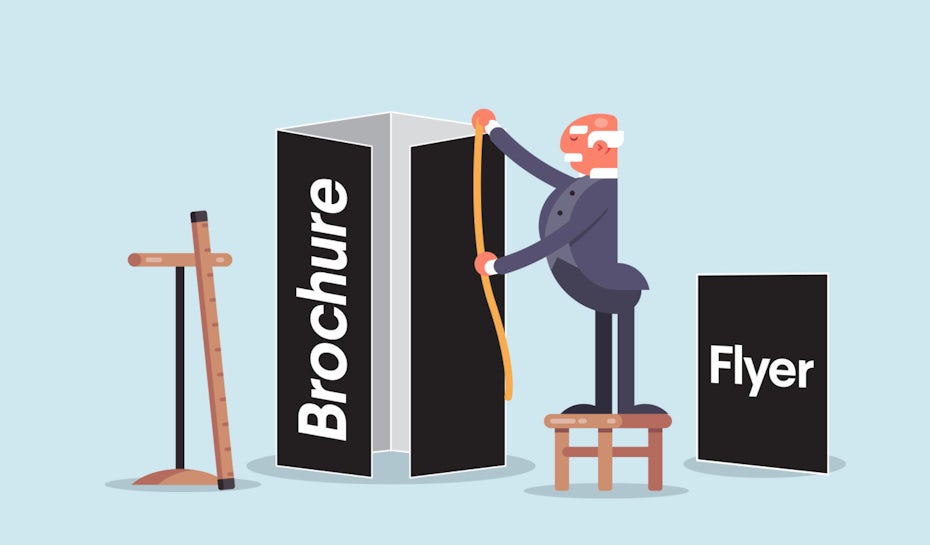
Whether you need a flyer, a brochure or both depends on your marketing goals—and that's not where your print choices end. Your marketing goals and needs also drive what size flyer or brochure you need and what they need to be made of.
Why would I need a flyer?
—
Flyers are quick. When you have little bursts of information you need to get out there, a flyer's the way to do it. Use a flyer when you need to:
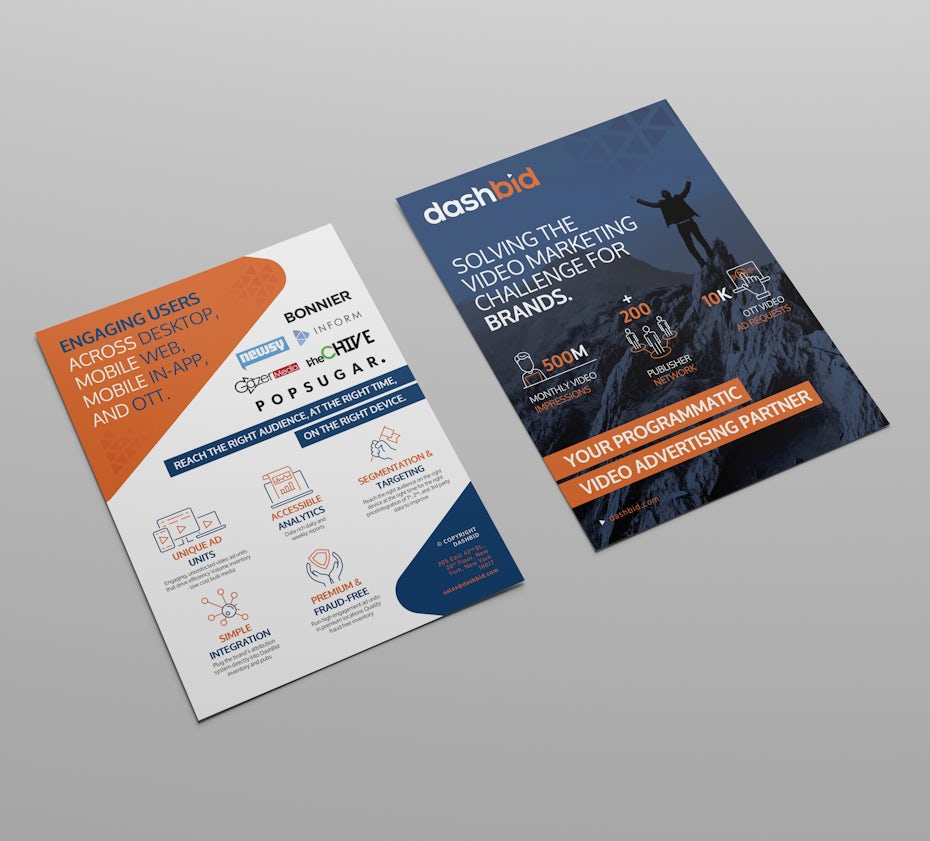
- Get the word out about a sale
- Let everybody know you're open for business
- Get the conversation between you and your customers started with a fact sheet about your product
- Advertise who you are, what you do and what you're promoting right now
- Announce an upcoming event
- Get coupons into your customers' hands
Flyers are low-tech, so they're perfect for situations where low-tech is just fine or even preferable, like advertising a yard sale or inviting the whole town to your cafe's grand opening.
Standard flyer sizes
—
A standard flyer is usually the size of a piece of computer paper. That's 8.5" x 11" in the US, or the very similar A4 (8.3" x 11.7") in the rest of the world. But smaller formats are also popular when it comes to flyers. The most common flyer sizes include:
- Letter size: 8.5" x 11" or A4: 8.3" x 11.7"
- A5: 8.3" x 5.8"
- A6: 5.8" x 4.1"
- DL (dimension lengthwise): 8.3" x 3.9" or one third of A4
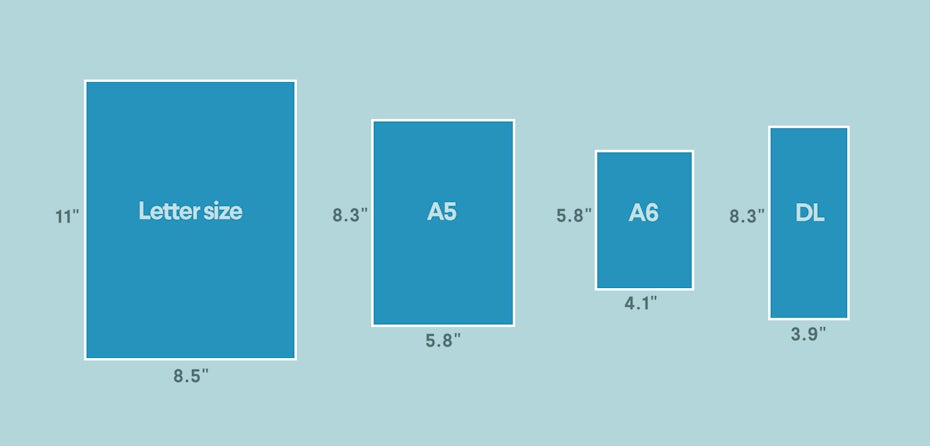
Which size you should pick for your flyer design depends largely on the content of your flyer, as well as where and how you want to distribute it. If you're planning to tape your flyers to walls or want to convey lots of information, you should go for a larger size, such as letter size or A4. If you're planning to mail out your flyers, you need to pick a size that fits into a standard envelope, such as A6 or DL.
The cost per flyer with the printer of your choice will also affect what flyer size you should go for, since larger and non-standard sizes will likely be more expensive.
Best flyer materials
—
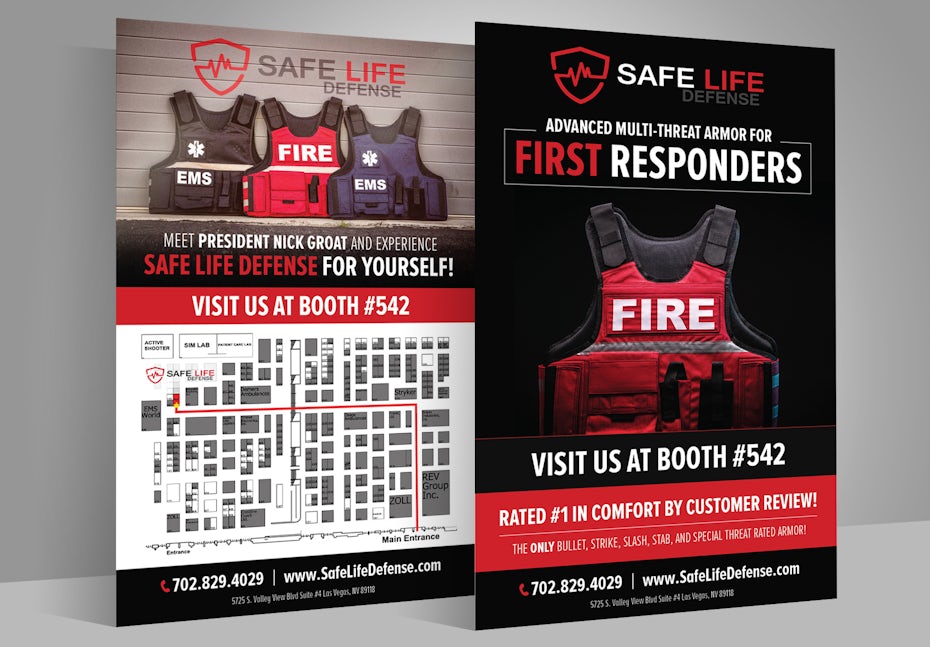
Since they're meant to have short lives, they're usually printed on lower quality, inexpensive paper. That doesn't mean you can't print up flyers on higher quality paper or that there's never a reason to—some flyers are meant to last a long time, like a list of customer service procedures to be posted in a call center. A flyer designed for this job needs to be on durable paper.
Want to learn more about flyer design? Check out this article on how to design a flyer.
When do I need a brochure?
—
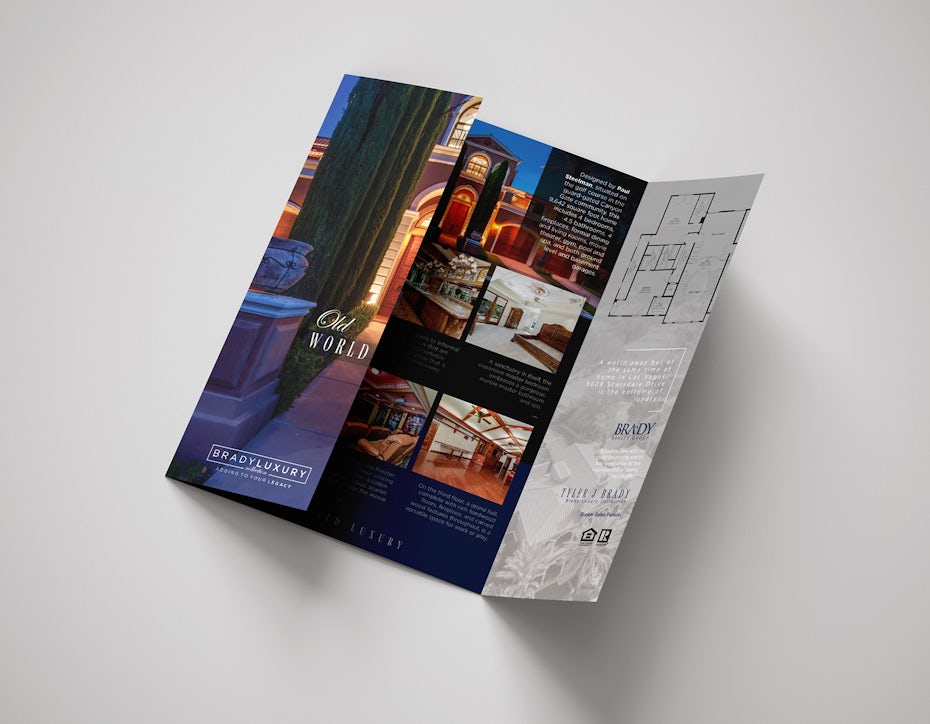
We've just sent you your free brochure ebook.
When you have more information to get out than you can fit on a flyer, you need a brochure. That's the main difference between a flyer and a brochure. But that's not the only difference between them. There's another, equally straightforward difference between a flyer and a brochure to keep in mind: a brochure has folds and a flyer doesn't. Sure, you can fold a flyer, but if the fold is part of its design, it's not a flyer…it's a brochure.
The fold is key. There are lots of different ways to fold a brochure, and the best fold choice depends on the brochure's size and its design. Commonly used brochure fold types include:
- Trifold
- Half-fold
- Gate fold
- Double gate fold
- Parallel fold
- Z-fold
- Accordion fold
- Roll fold
- and more…
Standard brochure sizes
—
How big is a standard brochure? There are lots of standard brochure sizes. The most common paper sizes for brochures (before folding or when opened) include:
- Letter size: 8.5" x 11" (or 21.59 x 27.94 cm)
- DIN A4: 8.3" x 11.7" (or 21.0 x 29.7 cm)
- Legal size: 8.5" x 14"
- Memo size: 5.5" x 8.5"
- Tabloid size: 11" x 17"
- 9" x 12"
- 11" x 25.5"
The most common styles of brochures are letter-size half-fold and tri-fold. That means that each side of a tri-fold brochure that is printed on standard letter size 8.5" x 11" paper will measure 8.5" x 3.69" after folding. If you print a half-fold brochure on the same standard letter size 8.5" x 11" paper, each side will measure 8.5″ x 5.5″ after folding.
When to pick a brochure over a flyer
—
So, when would you wanna print up a brochure instead of a flyer? Basically, any time you have more information to give out than you can fit on a flyer. This could be when you:
- Follow up connections you've already made
- Want to educate an engaged audience about a product or promotion
- Need to have reference materials on hand
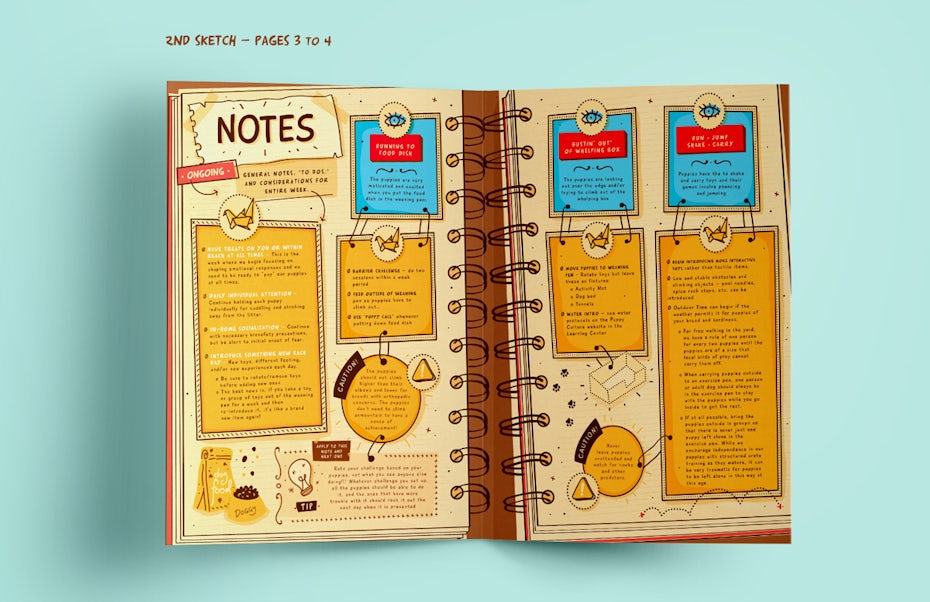
A brochure and a flyer can be two points in the same funnel. After piquing interest in your product—say by handing out flyers that list everything that makes it amazing in bullet list form at a trade show—you'd use a brochure to give people who want to know more the information they're after. Then with the information they got from the brochure, they'll either buy the product or book the consultation or otherwise do what you need them to do to make the sale.
Learn how to design a brochure in this step-by-step guide.
What about pamphlets? And booklets?
—
Flyers and brochures are just two of the many, many printed formats out there. While a flyer is a pretty much universally defined thing, what constitutes a brochure versus a pamphlet or a booklet isn't as generally recognized.
A pamphlet and a brochure are the same thing. Some define a pamphlet as a short brochure, but it's just as common for the terms to be used interchangeably.
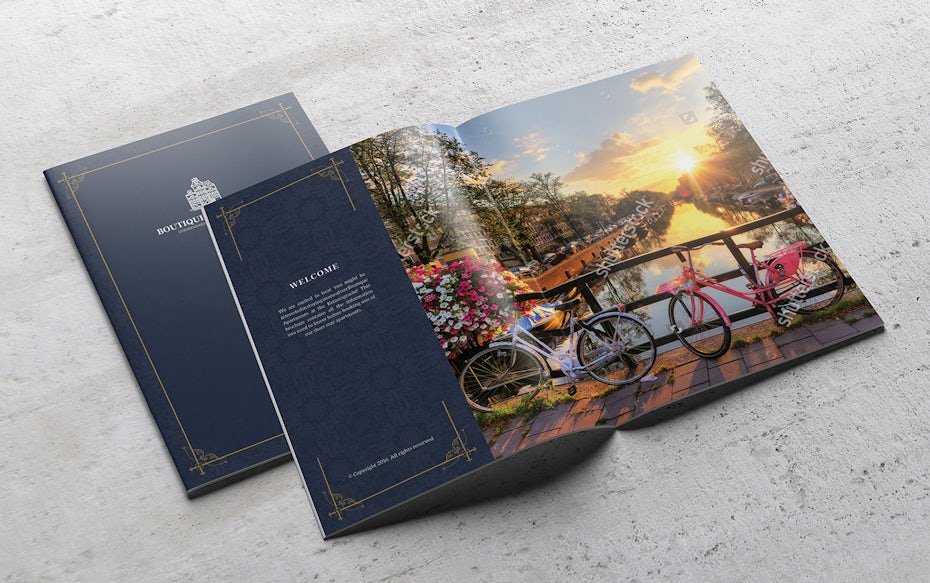
A booklet is just a little book. And just like a big book, a booklet is bound, rather than folded. Typically, they have higher quality paper than brochures and more durable binding. Generally, important, evergreen information is reserved for booklets and the higher printing cost they command.
Design for the size you need
—
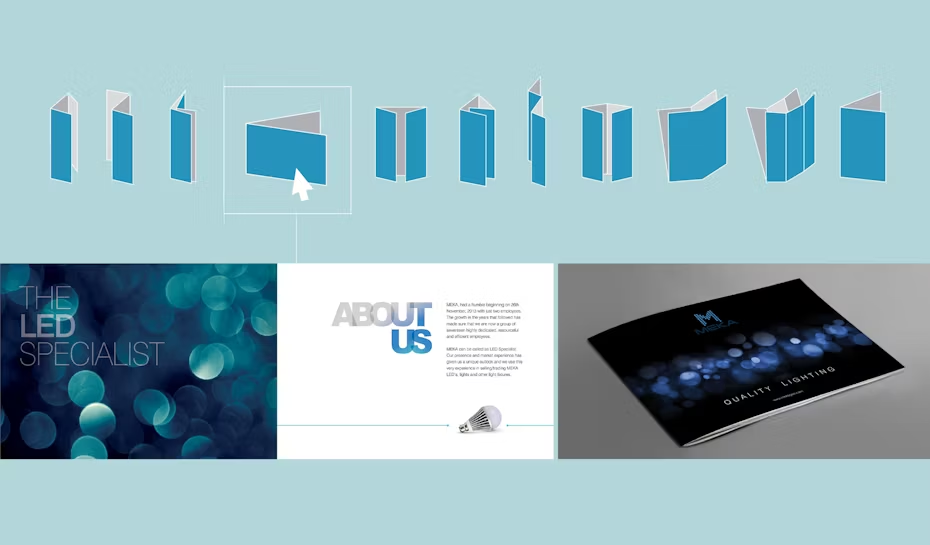
From the get-go, you should be thinking about how you're gonna distribute your flyers or brochures because this is going to factor into your budget for them. If you plan on sending them out in letter size or big manila envelopes, you have your answer for "what size should my flyer/brochure be?" You also know you'll have to budget for the envelopes.
Ask yourself if you'll be:
- Handing the flyers or brochures out at events
- Slipping them under doors
- Stapling them to community bulletin boards or telephone polls
- Taping them onto a wall
- Mailing them out
- Including them in larger packets
- Sticking them under parked cars' windshield wipers
We've just sent you your free brochure ebook.
It's hard to know whether a design works if you don't see what the finished product is gonna look like. That's why you need mockups. Ideally, you'll be able to look at fully fleshed-out mockups that show your design in action but if this isn't the case, even a simple mockup showing how it'll fit onto the paper can work. We've covered mockups in a previous blog post so if you're not familiar with them and how they work, check it out.
Looking at your mockup can show you where you need to tweak your design. A font that's legible on a large flyer might be difficult to read on a small pamphlet. A color palette that's fine at short distance might have too low a contrast to be seen from further away, making it a poor choice for a flyer that's going on a bulletin board. Your message also determines the right design choices for your flyer or brochure; a flyer for a going out of business sale needs brighter, more urgent colors than an ETF's prospectus brochure.
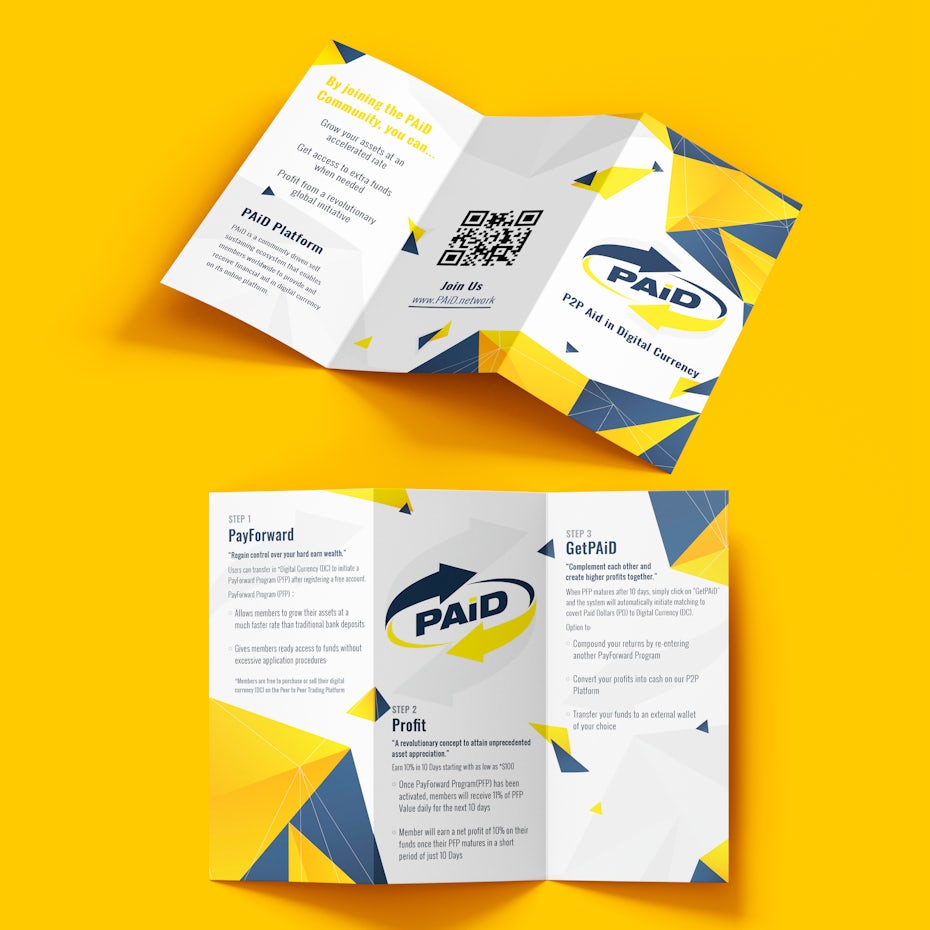
I think I need something…non-standard
—
No problem! Just because flyers and brochures have standard sizes doesn't mean yours has to be standard-sized.
Maybe you need a brochure that's tall and narrow because you'll be giving it out bookmark-style between the pages of your latest novel or a flyer that's dainty enough to be tied up like a little scroll in a teacup. Or maybe it's not a non-standard size that you need, but a material that's a little different from your typical paper options (like a water-resistant brochure showing all the species guest can expect to see on a whale watching adventure or a flyer that glows under black light advertising drink specials on rave night at your club.)
You're going to pay a bit more to get what you're after, but investing in the perfect print product for your brand will pay off…if your brand calls for it. Sometimes, simple is best — like if you're just stapling some garage sale flyers around town and plan on ripping them back down 72 hours later. But when you're designing something that's going to make a bigger impact or have a longer life, the size and material you choose are just as crucial to your brand identity as the design elements like your font and color palette.
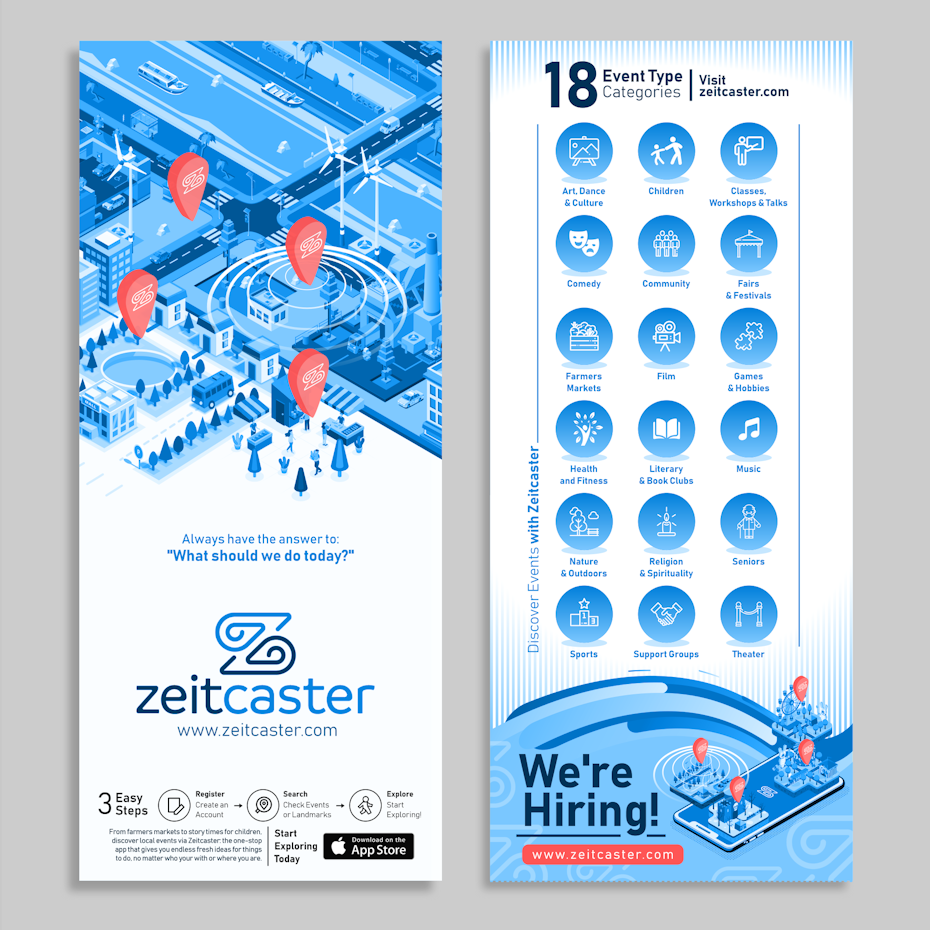
When you decide you need something that's out-of-the-box, you need to budget for everything that comes with deviating from the norm like custom-made envelopes that fit your bigger-than-average or oddly shaped flyer.
You also need to make sure you work with a designer who has experience creating unique designs, because the size and shape of your finished product need to be considerations from the very first sketch. Trying to scale or reformat a design made for standard size page or brochure can leave you with an end product that feels wonky or doesn't achieve the effect you're after because the proportions and size hierarchy are all off.
Remember, flyer size matters!
—
When you're designing a flyer or brochure (or any printed item for that matter) always, always think about the end product's actual size and shape through every stage of the design process. A design that works for a letter size brochure probably isn't gonna work for a tabloid size brochure, nor is a design that looks amazing as a tri-fold gonna work as an accordion fold.
Before you even start the design process, determine what you'll be making, its size and how it'll be folded. And before you determine those, work out where the item's going to fit in your funnel—because that will lead you to the size, material and shape that'll do the best job showcasing your design.
Want the perfect flyer or brochure for your business?
Work with our talented designers to make it happen.
flahertylethe1985.blogspot.com
Source: https://99designs.com/blog/marketing-advertising/brochure-flyer-sizes/
0 Response to "What Are the Page Sized of a Blue Boog"
Post a Comment